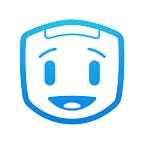How Chatbots Are Transforming the Health & IT Industries
Chatbots have the uncanny ability to imitate people/customer service assistants — and do so effectively by connecting customers to answers or actual people whenever necessary. Because of this likeness, they’re transforming the way patients and clinicians in healthcare settings receive information based on algorithms.
Chatbots, which are powered by AI, are becoming a more common customer service channel. They are getting better at delivering personal customer service, making it harder to distinguish if someone is communicating with a person or a computer.
In the healthcare field, there’s a huge market for developing chatbot applications for patients and clinicians. Here are a handful of examples of chatbots in the industry today:
Your.MD
Most of the emerging uses of chatbots focus on assessing patient symptoms. Traditionally, if a patient gets sick, they go to the doctor, describe their symptoms, and the doctor provides treatment or advice. Today, people expect answers immediately and don’t necessarily need an in-person examination.
Your.MD is a free, London-based service that is designed to answer a patient’s questions like a doctor can. For example, if your symptoms are nausea and a severe headache, it will ask if you have any of the other following symptoms: stiff neck, reduced vision, vomiting, a headache that worsens when looking into light. You’ll be asked further questions and get advice on what a migraine is and when to see a doctor. The answers to your questions will help AI determine what your condition or illness may be.
The chatbot claims to be the “largest ever medical map linking probabilities between symptoms and conditions,” writes Dyllan Furness for DigitalTrends.com. Its technology is a “pre-primary care guidance” that’s supposed to help patients get a more accurate self-diagnosis.
GYANT
Previously on our BotList blog, we’ve written about startup GYANT, a health diagnostics robot. This health assistance is especially helpful for people in developing countries to check their symptoms and point to a possible diagnosis.
GYANT is made up of a team of experienced tech entrepreneurs with a history of users in games, commerce and digital health who strive to combine medical science, data science, and human-centered design to help people globally. Its first product was a Zika virus checker that had 300,000 users since its launch. GYANT is available 24/7 in English, Spanish, Portuguese and German.
Florence
A chatbot nurse, Florence reminds people when to take their medications, helps users manage their health and wellness care, and it helps them find specialists and book appointments in their area. This bot, aptly named for famed nurse Florence Nightingale, does not offer medical advice and should not be used in emergencies, nor does it support emergency calls.
“If you see that people answered more than 200 reminders in a row, you know that you might actually help someone with your technology,” Florence creator David Hawig, a German entrepreneur, said. “And more and more people are also using other features of Florence like period or mood tracking. So, I think chatbots definitely have the potential to improve our healthcare system.”
Florence is just over a year old, so it’s still evolving, but it does have more than 2,000 daily users. A user simply has to start chatting with her inside of a messaging platform, like Skype, Kik or Facebook messenger.
One of Florence’s main project mentors is André Fialho, a MIT Portugal bioengineering Phd. He lives in the U.S., and his recent research is focused on how new technologies can help patients outside of hospital settings.
Within hospital settings, actual nurses are more prepared than ever to help their patients learn how to use modern technology and telemedicine to facilitate remote monitoring within hospital and healthcare facilities. In other words, nurses are becoming more tech savvy on integrating IoT into current practices.
Woebot
It was just announced in March that Woebot, the world’s first mental health chatbot, secured $8 million in funding to deliver high-quality mental healthcare worldwide. Woebot’s interactions are designed to be more conversational in nature and less robotic.
With more than 300 million people affected by depression annually, the growing need for mental health assistance is necessary. Woebot relies on scientific approaches to mental health, teaches skills such as cognitive behavioral therapy and provides coaching 24 hours a day. It also uses brief daily chat conversations, mood tracking, word games and curated videos to help people manage their mental health.
AI continues to revolutionize the way we do business and chatbots fueled by AI are becoming increasingly viable as a customer service channel. Some of the best ways to use medical chatbots include: scheduling doctors appointments if warranted, monitoring health, and notifying a human nurse if necessary. If it feels safe to you, you can also get questions answered for self-diagnoses. What are your thoughts on medical chatbots as they stand today?
